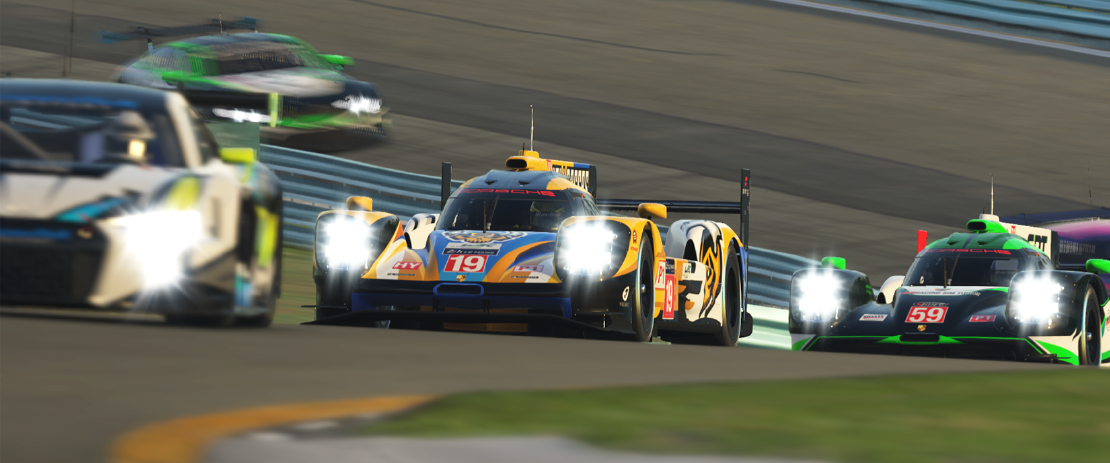
DGFX Race 1 - 4 hours of Watkins Glen
One of the first goals we set out for as a team was to qualify at least one car for the DGFX Endurance series. It’s a multiclass endurance series with a season that stretches over roughly six months with one race a month and as one of, if not the, biggest amateur leagues in iRacing, it attracts a lot of teams. While the pro teams often look towards leagues as NEO or SCO, there is still a lot of fiercely competitive teams running in the DGFX.
With that in mind, we were over the moon when we didn’t only qualify one, but two, cars for the series. One Porsche 919 LMP1 car, which won it’s qualifying race, and one Ferrari 488 GTE car.
The first race of the season took place at Watkins Glen, a popular but fairly narrow track which is often raced on the iRacing service. It’s popularity makes it a highly competitive track with a lot of teams having a quick pace, and it’s limited width makes it quite challenging for multiclass racing.
As always in a new season, it is hard to know what to expect with regard to speed versus the competition. There are some official practice sessions before the race where some teams participate, but it isn’t until the qualifying begins that you know where you actually stand in the field. Qualifying the GTE car was Wilhelm Wiberg and I think he was as pleasantly surprised as the rest of the team when he set a commanding pole position, a few tenths before the second GTE car. Magnus Vallström drove the LMP1 in qualifying and came away with a respectable 4th place, putting the car in the second row of the start.
Worth mentioning at this point is that the DGFX league uses a mechanism not often used in iRacing. Whenever there is a crash on the track and the car can’t make it safely to the pits, a pace car is called out and the field is gathered behind the pace car until the track is clear again. This is common in oval racing, but is rarely used on road tracks.
Well, the race was not even two laps old when the first pace car was called out. And that became a pattern for a long time, we lost count of the amount of pace cars during the race. Which in turn meant that all tactics went out the window. Now, you want to pit to take fuel and tires during the pace laps because you lose the least amount of time compared to your competitors. But what do you do when the pace car is called out and you have half a tank of fuel left? Do you stop and fill up, but risk losing some valuable track positions? Do you keep out on track, risking having to fuel up during green flag, losing even more time compared to your competition? These questions were asked not just once or twice, but a lot of times.
After about two hours of racing, Wilhelm Wiberg handed the GTE car over to Stellan Lindeberg while still in a top 3 position (it’s hard to know the actual standings when all cars doesn’t run the same fuel strategy). Stellan started off with a great pace, showing that we were still in contention to win the race. Unfortunately, he had technical problems, leaving us out of any real chance to end in a top five position. We ended 9th, which was a disappointment considering our real pace, but we had shown the other teams that Hellracers were not just in the league to participate, but to win!
The LMP1 car was taken to the finish line by Hampus Baaz, putting in a great effort with a really high pace. With a new season, it’s sometimes hard to remember all the rules, and Magnus had broken one of them leading to a stop and go penalty. But even with that served, Hampus and Magnus managed to take third place in the LMP1 field, showing off great pace and traffic management.
Overall, we were happy with the realization that we are in the league as two real contenders, both the LMP1 and the GTE car showed a pace that is top three material. Looking forward to the next one!